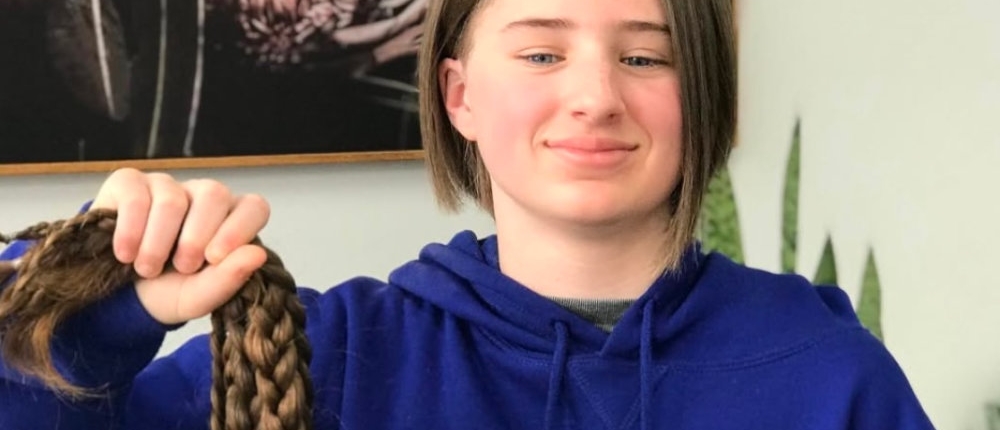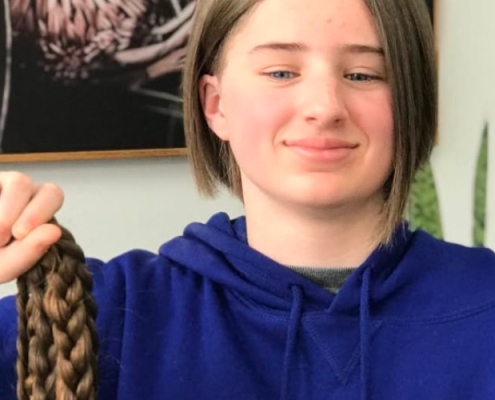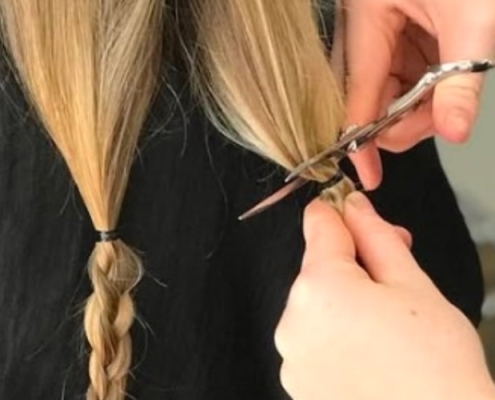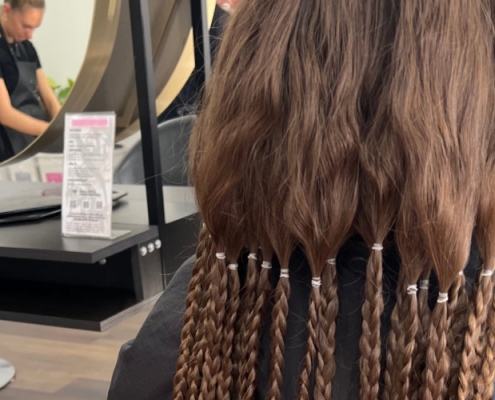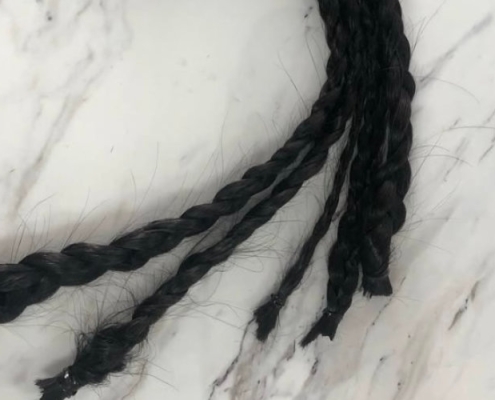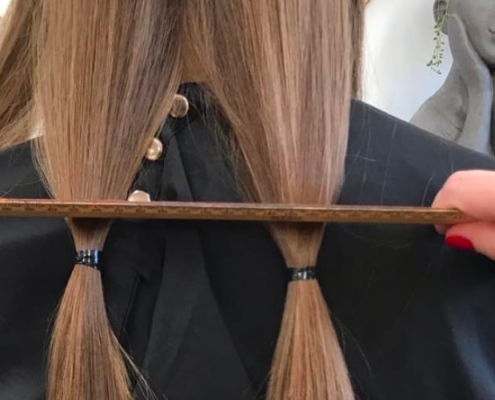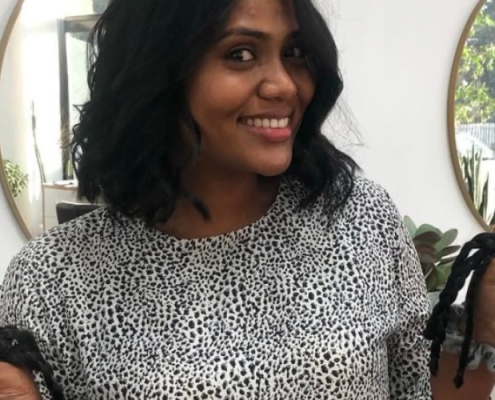Why Hair Donations Matter: Supporting Cancer and Alopecia Patients
Hair donation is a powerful act of kindness that provides individuals experiencing hair loss with high-quality wigs made from real human hair. For people battling cancer, alopecia, and other medical conditions that cause hair loss, a donated wig can do more than just restore their appearance—it can boost confidence, improve mental well-being, and help them regain a sense of normalcy.
This article explores the significance of hair donations, how they directly impact cancer and alopecia patients, and why your contribution can make a real difference.
Understanding Hair Loss: The Emotional and Psychological Impact
Hair loss due to medical conditions can be emotionally distressing, often leading to a loss of self-esteem and confidence. For many, hair is an essential part of identity, and its sudden loss can be a traumatic experience.
Hair Loss in Cancer Patients
- Chemotherapy-Induced Hair Loss: Many cancer patients undergoing chemotherapy experience sudden and complete hair loss, often within a few weeks of starting treatment.
- Emotional Impact: Losing hair due to cancer treatment can be a constant reminder of illness, making patients feel vulnerable and self-conscious.
- The Role of Wigs: A natural hair wig provides comfort and normalcy during an otherwise challenging time, allowing patients to maintain their confidence in social and professional settings.
Hair Loss in Alopecia Patients
- Alopecia Areata: An autoimmune disorder that causes patchy or complete hair loss, often occurring suddenly and unpredictably.
- Permanent Hair Loss: Unlike chemotherapy-related hair loss, alopecia can be long-term or permanent, making a high-quality wig essential for those affected.
- Psychological Well-being: Individuals with alopecia, including children and teenagers, may experience anxiety, depression, and social withdrawal due to their condition.
For many facing hair loss, receiving a wig made from donated hair is more than just a cosmetic solution—it is a **lifeline that helps rebuild confidence**.
Why Real Hair Wigs Matter
While synthetic wigs are a more affordable option, they do not offer the same benefits as wigs made from real human hair. Natural hair wigs provide:
- A More Natural Appearance: Human hair wigs look and feel just like real hair, making them virtually undetectable.
- Greater Styling Freedom: Unlike synthetic wigs, real hair wigs can be washed, curled, straightened, and styled just like natural hair.
- Better Comfort: Human hair wigs are more breathable and comfortable for daily wear, especially for individuals with sensitive scalps due to medical treatments.
- Longevity: While synthetic wigs last only a few months, human hair wigs can last several years with proper care, providing a long-term solution.
To learn more about the differences between synthetic and real hair wigs, read: Ponytail Donation vs. Synthetic Wigs: Which Helps More?.
Who Receives Wigs Made from Donated Hair?
Hair donation organisations work hard to provide high-quality wigs to individuals in need, often at no cost. Some of the primary recipients include:
- Cancer Patients: Individuals undergoing chemotherapy who experience temporary but complete hair loss.
- Children with Hair Loss Conditions: Many organisations focus on providing wigs for children with alopecia, trichotillomania, or other conditions causing hair loss.
- People with Medical Hair Loss: Individuals with genetic disorders, severe burns, or medical treatments that cause permanent hair loss.
How Your Hair Donation Makes an Impact
When you donate your ponytail, you are contributing to a life-changing process that transforms your hair into a custom-made wig for someone in need. Unlike mass-produced synthetic wigs, human hair wigs provide recipients with the most natural and comfortable experience, helping them regain confidence and dignity. Below are some of the key ways in which your hair donation makes a profound impact.
1. Restores Confidence
For many individuals, hair is more than just an aesthetic feature—it’s a core part of their identity. Losing hair due to medical conditions can significantly affect self-esteem, making people feel vulnerable, different, or even socially isolated. This is particularly true for children and young adults who may struggle with bullying or low self-confidence due to their appearance.
- Cancer Patients: Chemotherapy-induced hair loss is often one of the most emotionally distressing side effects of cancer treatment. Many patients report feeling as though they have lost part of their identity. Wearing a human hair wig allows them to look and feel more like themselves during treatment, boosting their confidence and helping them navigate social interactions with greater ease.
- Alopecia and Autoimmune Conditions: Individuals with alopecia, trichotillomania, or other medical conditions that cause hair loss often struggle with anxiety and depression related to their appearance. A high-quality wig can restore their sense of self and allow them to feel more at ease in public and personal settings.
- Real Impact Story: Consider a young teenage girl with alopecia who has spent years feeling different from her peers. Receiving a real hair wig, styled just the way she likes, allows her to walk confidently into school without feeling self-conscious. It’s not just about the hair—it’s about the freedom to be herself.
2. Provides a Sense of Normalcy
Hair loss can be an incredibly disruptive experience, especially for individuals who have spent their lives styling and caring for their hair. Wearing a high-quality, real hair wig allows recipients to reclaim a sense of normalcy in their daily lives.
- Children and School Life: For children experiencing medical hair loss, going to school without hair can be daunting. A donated wig helps them blend in, reducing feelings of being “different” and allowing them to focus on their education and friendships rather than their condition.
- Work and Social Confidence: Many adults facing hair loss find it difficult to return to work, attend social events, or even look in the mirror. A wig provides the confidence to engage in everyday activities without feeling defined by their medical condition.
- Family and Personal Interactions: Losing hair can impact personal relationships, particularly for those in long-term partnerships or marriage. Being able to style and maintain hair as they always have helps many recipients feel more comfortable and connected with their loved ones.
Hair donation offers more than just a wig—it provides the emotional support necessary to regain a normal, fulfilling life.
3. Offers an Alternative to Expensive Wigs
High-quality human hair wigs can be prohibitively expensive, making them inaccessible to many individuals who need them most. The cost of a professionally crafted human hair wig can range from **$2,000 to $5,000 AUD**, depending on the quality, length, and craftsmanship. For families already dealing with medical expenses, purchasing a wig can be an added financial burden.
- Free Wigs for Patients in Need: Many hair donation organisations provide wigs at no cost to children and adults who cannot afford them. Your donation helps ensure that these individuals receive a high-quality, natural wig without worrying about the financial strain.
- Handcrafted Wigs Require Multiple Ponytails: A single human hair wig often requires **6 to 12 ponytails** to create, meaning every donation counts. By donating your hair, you are directly contributing to the production of wigs that would otherwise be out of reach for many recipients.
- Reducing Financial Stress: For families already facing medical bills, a free, high-quality wig can significantly ease their burden and allow them to focus on treatment and recovery rather than their appearance.
By donating your ponytail, you are making human hair wigs accessible to those who need them most, regardless of their financial situation.
4. Supports Cancer and Alopecia Organisations
Hair donation programs often work in partnership with medical charities, hospitals, and research organisations to provide more than just wigs. These partnerships help support the broader mission of improving the lives of individuals with hair loss conditions.
- Raising Awareness: Hair donation campaigns increase public understanding of alopecia, chemotherapy-induced hair loss, and other medical conditions that cause hair loss.
- Supporting Research: Some organisations allocate funding towards medical research aimed at developing better treatments for hair loss conditions.
- Encouraging Community Involvement: Many charities host hair donation drives, bringing communities together and encouraging people to take an active role in supporting those affected by hair loss.
- Emotional and Psychological Support: In addition to providing wigs, some organisations offer support groups, counselling services, and mentorship programs to help recipients cope with their journey.
By donating your hair, you are contributing to a larger movement that goes beyond wigs—you are helping create a world where individuals with hair loss feel seen, supported, and empowered.
The Ripple Effect: How One Hair Donation Can Inspire Others
One of the most powerful aspects of hair donation is its ability to inspire others. When people see a friend, family member, or even a stranger donate their hair, it often sparks a chain reaction. Schools, workplaces, and community groups have been known to organise collective hair donation events, amplifying the impact.
- Encouraging Children to Give Back: Many young donors participate in hair donation programs as their first act of charity, learning the value of giving at an early age.
- Social Media Influence: A single social media post about a hair donation can encourage dozens of others to do the same, increasing awareness and participation.
- Family and Friends Getting Involved: When one person donates their hair, it often inspires their loved ones to consider doing the same, creating a ripple effect of generosity.
Final Thoughts
Donating your ponytail is more than just cutting your hair—it’s giving someone the opportunity to feel confident, regain a sense of normalcy, and access a high-quality wig they may not otherwise afford. Your donation also plays a role in supporting vital research, raising awareness, and inspiring others to contribute.
If you’re ready to take the next step in making a difference, visit our service page: Ponytail Donations.
Every strand counts, and your generosity can help transform lives.

